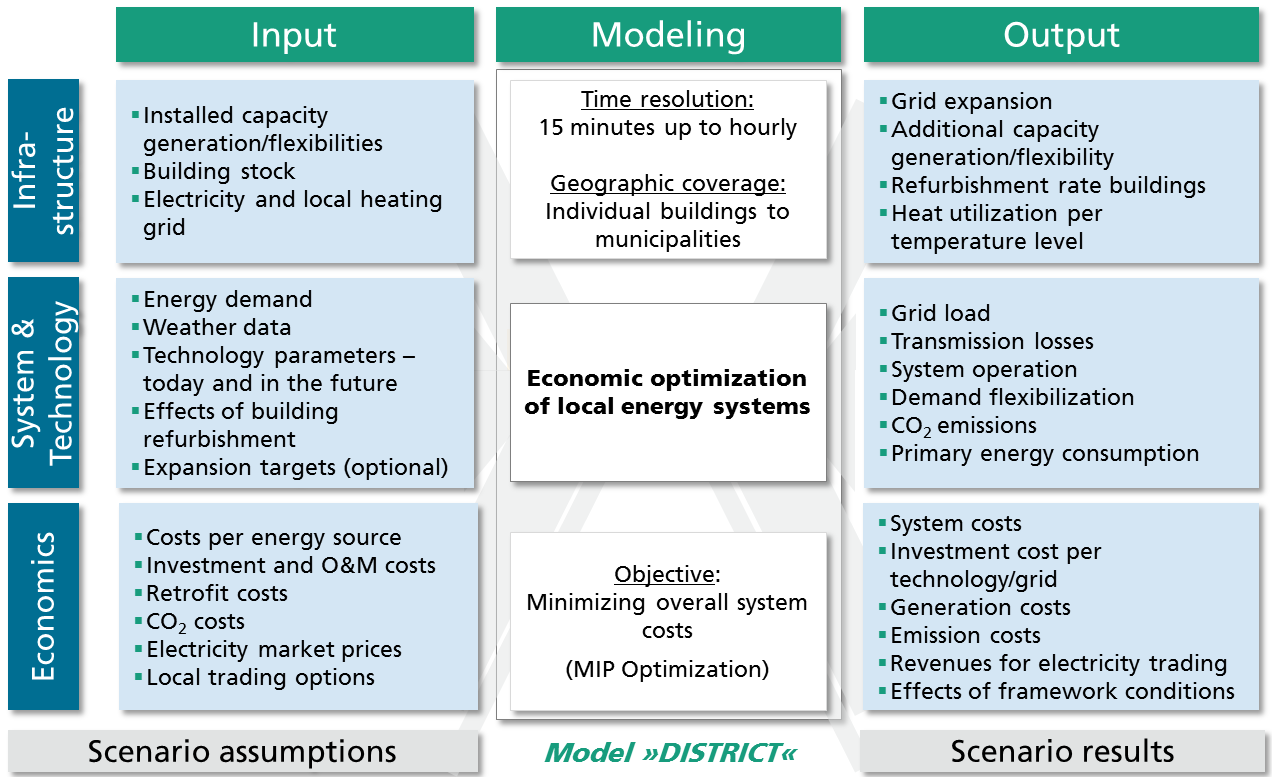Topics of our customers
- Economic analysis of energy supply concepts
- Optimization of energy supply concepts
- Operation and interaction of technologies in industry and businesses
- Structural and operational optimization as well as consultancy to regulatory topics
Background of model application
Especially at distribution network level, the rising share of distributed electricity generation plants combined with an already distributed heat infrastructure offers new opportunities to develop new operation strategies and incorporate new, flexible as well as sector-coupling technologies. In energy systems with high shares of fluctuating renewable energies, increasing the interplay between the heat, cold and electricity sector as well as the benefit from flexible technologies will play a crucial role in order to secure the stability of the electricity grid. Additionally considering the potential of various energy efficiency measures, with a focus on building retrofit, gives a variety of topics that need to be addressed in order to shape future efficient energy systems.
Our model DISTRICT offers a broad range of applications. Our main focus is to examine the systemic opportunities of regional sector-coupling, flexible generation and storage technologies as well as energy efficiency measures. The main questions answered by the model are the following:
- How could a future cost-efficient regional energy system and its annual development path look like?
- Which flexibility options will be used in this energy system?
- What role do energetic building refurbishments play in an optimized system?
- How do framework conditions affect the regional energy system layout and operation, especially regarding sector-coupling, flexibility options and retrofitting?
